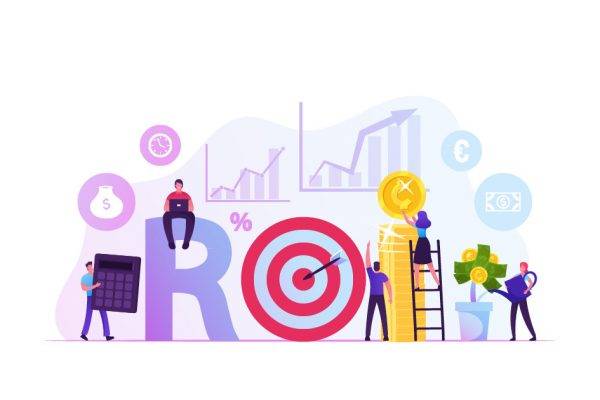What’s the best spend for your advertising dollar?

Filters
Results
There’s a lot of work that goes into making a marketing effort successful. Getting the creative bits down into something catchy and shareable is a huge help. But even getting everything down perfect is only half the battle. What about distribution? How can you make sure that genius Adonis of marketing gets to the people who like that sort of thing? We’ve heard from many people who tried one-off advertising who weren’t pleased with the result. That often boils down to one thing: poor spending of their marketing budget. So how can you make sure that you get the best spend for your advertising dollar?
Traditional Advertising
Traditional advertising like radio, TV, newspaper, and signage can all be effective, but focusing on traditional advertising alone might not be the best spend of your advertising dollar. One of the biggest drawbacks is the cost. Running a single newspaper ad, for instance, can cost upwards of several hundred dollars. This might not be so bad if the newspaper has a good readership, but many tend to be getting fewer subscribers each year–especially the physical paper.
If you decide to do traditional advertising, make sure to look into the benefits, including how many people will see or hear your ad. Sometimes the typical package offered won’t work well for you, if it does at all. And will your target audience be reachable through the format?
Digital Advertising
While much of traditional advertising is on the decline, digital platforms and ads are like that exploding arrow on the graph that flies right off the chart. In 2020, it’s estimated that the average person spends 2 and a half hours per day on social media. No, not online. Just on social media. Some studies suggest that New Zealanders spend up to six hours a day spent online (thankfully including video streaming!), so about a quarter of our lives. Why wouldn’t you want to focus on marketing to people where they’re already spending their time?
However, the digital landscape can be quite crowded with ads on YouTube videos, Facebook, Google, and on your everyday websites. There’s so much advertising online that a lot of it gets completely ignored. That’s why it’s crucial to know where to advertise and who to market to in order to get the best return for your advertising dollar.
How can I get the best return on my marketing?
If you think about it, marketing only exists because it generates more money than a company puts towards it. The old adage is true: you have to spend money to make money. Finding the right amount to spend for maximum return is tricky. It depends on a lot of factors such as budget, industry, the specific products you’re selling, and your audience. Typically, you’ll get the best results by doing some combination of Search Engine Marketing and Social Media Marketing.
Search Engine Marketing
You know those results at the top of google that have “Ad” next to them? That’s Search Engine Marketing in a nutshell. So how do you get one of these top-tier placements? Through Google Ads.
Google Ads is a platform where you define a budget, create ads, and then have them show on the top of the list for certain searches based on the budget and quality of the ad. It can be extremely effective–but only if time is invested in learning how to make quality ads and understand the platform. Search engine marketing can be especially important if you sell products online. If you’ve thought about selling online but aren’t yet, you might be interested in our article, Which eCommerce platform is best for me?
Search Engine Marketing – Does it work?
So what kind of return can you expect? That varies by industry, and there’s a handy chart here to show some common cost-per-click (CPC) by industry. As you can see in the chart, the lowest average for Search (the ads on top of a Google search) is $1.16 per click for e-commerce. For display (picture ads on other sites besides Google), Travel is at $0.44 per click.
How does Southland compare? One of our clients in the e-commerce business was at 12 cents per click in May 2020. Comparing that to the average price of $1.16, our client is getting almost 10x the clicks as the average for the industry because the account was set up and ran by an experienced team. Sales wise, for a few hundred dollars a month, this client gets a few thousand in sales as a result of ads, meaning 1 advertising dollar brings in several–sometimes 5 or even 10 dollars back–each month.
Social Media Marketing
Practically everyone in the country has an active Facebook account, and most that do will check it at least once per day. That’s a lot of chances to show someone that you have the products and services they’re looking for. So how do you make sure it’s your brand that pops up instead of a rival’s?
Building a following can take a long time. With a bigger following comes greater reach, meaning your posts go to more people, who in turn can follow you, meaning you get greater reach, and so on. But to get that snowball rolling, you have to start reaching people, which can be a major hurdle when starting out.
One form of social media marketing that can help you leap this hurdle is Facebook Ads. Like Google Ads, Facebook Ads is an enormous suite with more options than most people ever have the chance to see, let alone use effectively. By choosing the right type of campaign targeted to the right audience can bring in several times the return on investment.
Social Media Marketing – Does it work?
We’ve done Facebook Ads for clients who have had incredible results. One had the number of online sales increase over 10x previous months and even more in dollar amounts. Including the set-up and planning time, this amounted to over a 600% return on investment.
Another client who tried Facebook Ads integrated the catalogue directly for remarketing so that we could show people who viewed a product that same product as an ad later. Using that method, in one week and $50 spent on ads, over $1800 worth of sales were made directly from these ads. Including the setup time, that’s still a 5x return on investment, and these ads are running continuously and are still generating sales without any extra input needed. Breaking down the first week, that was about $5 of ad spend per sale with each sale averaging over $180. Not bad at all!
Does this mean digital advertising is better than traditional advertising?
For many clients, yes. If forced to choose one method, digital tends to give the best value for your advertising dollar; as long as it’s set up by someone who knows what they’re doing.
However, that doesn’t mean both types can’t work together. Having a website, Facebook page, Google ads, flyers, and radio ads all working together can create a tight, complete, and ubiquitous campaign. You’ll be everywhere, and reaching people in more ways than ever.
If you’d like to find out how to get the maximum return for the advertising dollar for your business, come in for a chat and find out how to make your marketing money work for you!





